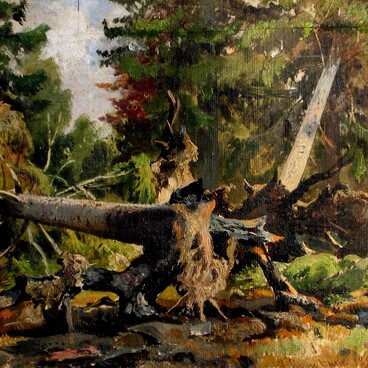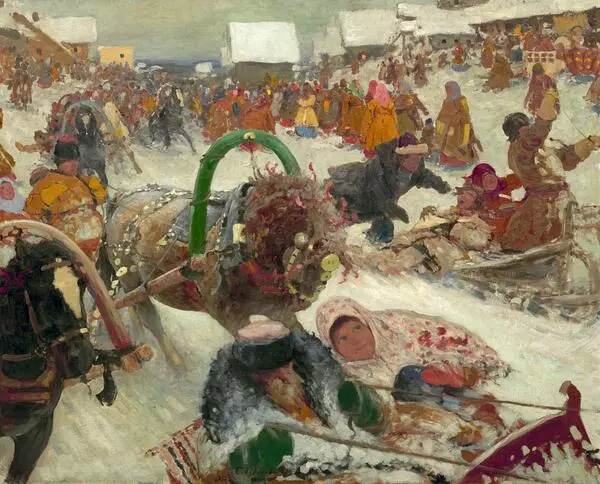Sergei Vasilyevich Ivanov (1864-1910) was Russian Itinerant artist. He studied painting at the Moscow School of Painting, Sculpture and Architecture, as well as at the Academy of Arts in St. Petersburg. In 1885, Ivanov finished his studies, and from that moment began to work on the ‘resettlement’ theme. The artist received a certificate from the Moscow Art Society for ‘travel and residence’ in the provinces from Moscow to Orenburg, and hit the road with the peasants, without even waiting to receive a teacher certificate from his school.
The resettlement of peasants to Siberia began after the reform on the abolition of serfdom in 1861. Many were left either with very modest land plots, or without land at all. Several million peasants began their journey, rushing in search of free land to Siberia, Transbaikal and the Far East.
They left their insignificant allotments, collected a few things, and set off on the road - some on foot, some on loaded carts, the most fortunate - by railway. Sergei Ivanov walked many miles with them, making sketches from nature. Observations are captured in a series of paintings reflecting this historical period: ‘Settlers. Walkers “(1886),"Female Settler in a Carriage ‘(1886), ’ Return Settlers"(1888), ’ On the road. Death of a Settler"(1889). The last painting, now kept in the Tretyakov Gallery, was presented at the 17th exhibition of the Itinerants in 1889 and brought the artist wide fame.
In the painting from the collection of the Zaraysk Kremlin ‘To New Places. Russia is Coming! " (‘Settlers’) the artist depicted a wide Russian field and a long line of loaded carts of peasants stretching beyond the horizon so far that the viewer does not see the end. This work can be attributed to the early works of the cycle, and it is rather descriptive. Ivanov records the history, thoroughly depicting each participant in the procession, as well as the details of their belongings. There is no tragic sounding in the picture: a warm summer day, the sun is shining brightly, and the settlers do not look either agitated or upset, they calmly walk towards their new destiny. In the very last work of the cycle, which brought fame to the painter, the topic of resettlement was posed more acutely, it directly addresses social issues, forcing the viewer to empathize with the heroes of the picture and think about what consequences this resettlement brought to ordinary people.
The resettlement of peasants to Siberia began after the reform on the abolition of serfdom in 1861. Many were left either with very modest land plots, or without land at all. Several million peasants began their journey, rushing in search of free land to Siberia, Transbaikal and the Far East.
They left their insignificant allotments, collected a few things, and set off on the road - some on foot, some on loaded carts, the most fortunate - by railway. Sergei Ivanov walked many miles with them, making sketches from nature. Observations are captured in a series of paintings reflecting this historical period: ‘Settlers. Walkers “(1886),"Female Settler in a Carriage ‘(1886), ’ Return Settlers"(1888), ’ On the road. Death of a Settler"(1889). The last painting, now kept in the Tretyakov Gallery, was presented at the 17th exhibition of the Itinerants in 1889 and brought the artist wide fame.
In the painting from the collection of the Zaraysk Kremlin ‘To New Places. Russia is Coming! " (‘Settlers’) the artist depicted a wide Russian field and a long line of loaded carts of peasants stretching beyond the horizon so far that the viewer does not see the end. This work can be attributed to the early works of the cycle, and it is rather descriptive. Ivanov records the history, thoroughly depicting each participant in the procession, as well as the details of their belongings. There is no tragic sounding in the picture: a warm summer day, the sun is shining brightly, and the settlers do not look either agitated or upset, they calmly walk towards their new destiny. In the very last work of the cycle, which brought fame to the painter, the topic of resettlement was posed more acutely, it directly addresses social issues, forcing the viewer to empathize with the heroes of the picture and think about what consequences this resettlement brought to ordinary people.






